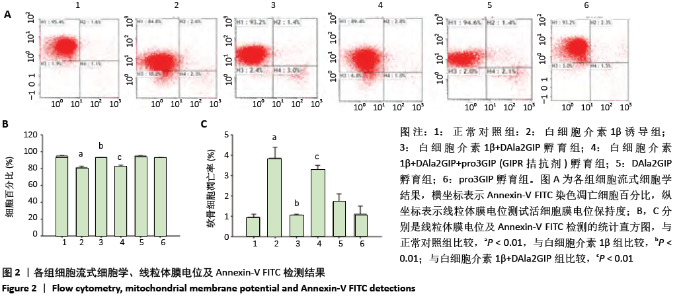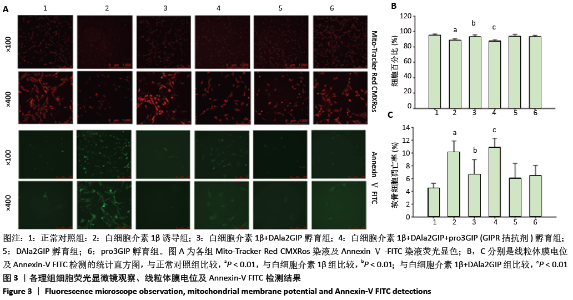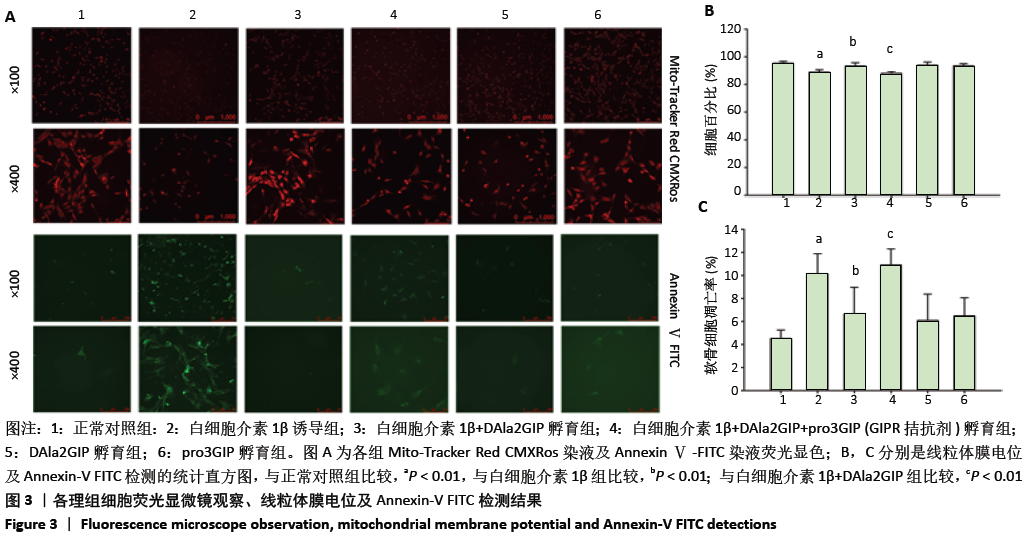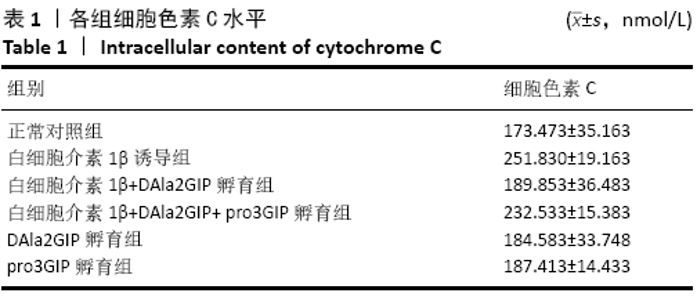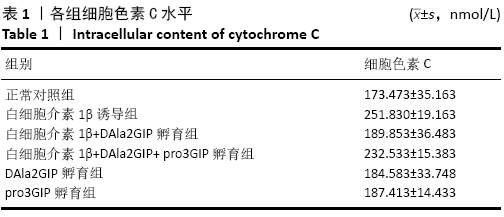[1] SUN K, LUO J, JING X, et al. Astaxanthin protects against osteoarthritis via Nrf2: a guardian of cartilage homeostasis.AGING.2019;11(22):10513-10531.
[2] LI MH, XIAO R, LI JB, et al. Regenerative approaches for cartilage repair in treatment of osteoarthritis.Osteoarthritis Cartilage.2017;25(10):1577-1587.
[3] 辛丽维.中国膝关节骨关节炎流行病学调查现状[J].双足与保健,2018, 27(20):73-74.
[4] 王坤正.骨关节炎诊疗指南(2018年版)[J].中华骨科杂志,2018,38(12):705-715.
[5] EYMARD F, CHEVALIER X. Pharmacological treatments of knee osteoarthritis.Rev Prat. 2019;69(5):515-519.
[6] SKOU ST, ROOS EM. Physical therapy for patients with knee and hip osteoarthritis: supervised, active treatment is current best practices.Clin Exp Rheumatol. 2019;120(5):112-117.
[7] ANSARI MY, KHAN NM, AHMAD I, et al. Parkin clearance of dysfunctional mitochondria regulates ROS levels and increases survival of human chondrocytes. Osteoarthritis Cartilage. 2018;26(8):1087-1097
[8] BLANCO FJ, REGO I, RUIZ-ROMERO C. The role of mitochondria in osteoarthritis. Nat Rev Rheumato. 2011;7(3):161-169.
[9] LOESER RF, COLLINS JA, DIEKMAN BO. Ageing and the pathogenesis of osteoarthritis.Nat Rev Rheumatol.2016;12(7):412-20.
[10] 王华军,陈均源,罗斯敏,等.糖尿病与骨关节炎相关性的Meta分析[J].中国矫形外科杂志,2017,25(11):994-998.
[11] SIVIERO P, TONIN P, MAGGI S. Functional limitations of upper limbs in older diabetic individuals.The Italian Longitudinal Study on Aging.Aging Clin Exper Res.2009;21(6):458-462.
[12] SCHETT G, KLEYER A, PERRICONE C, et al. Diabetes is an independent predictor for severe osteoarthritis results from a longitudinal cohort study.Diabetes Care.2013;36(2):403-409.
[13] KEYHANI-NEJAD F, BARBOSA, YANEZ RL, et al. Endogenously released GIP reduces and GLP-1 increases hepatic insulin extraction.2020;125:170231.
[14] BOLLAG RJ, ZHONG Q, DING KH,et al.Glucose-dependent insulinotropic peptide is an integrative hormone with osteotropic effects.2001;177(1-2): 35-41.
[15] SCHIELLERUP SP, SKOV-JEPPESEN K, WINDELØV JA, et al. Gut Hormones and Their Effect on Bone Metabolism. Potential Drug Therapies in Future Osteoporosis Treatment. 2019;10:75.
[16] Taruc-Uy RL, Lynch SA. Diagnosis and treatment of osteoarthritis.Prim Care. 2013;40(4):821-836.
[17] WALL KC, POLITZER CS, CHAHLA J, et al. Obesity is Associated with an Increased Prevalence of Glenohumeral Osteoarthritis and Arthroplasty: A Cohort Study.Orthop Clin North Am. 2020;51(2):259-264.
[18] OO WM, LIU X, HUNTER DJ. Pharmacodynamics, efficacy, safety and administration of intra-articular therapies for knee osteoarthritis.Expert Opin Drug Metab Toxicol. 2019;15(12):1021-1032.
[19] ZHU Z, LI J, RUAN G, et al. Investigational drugs for the treatment of osteoarthritis, an update on recent developments.Expert Opin Investig Drugs. 2018;7(11):881-900.
[20] NIEVES-PLAZA M, CASTRO-SANTANA LE, FONT YM, et al. Association of hand or knee osteoarthritis with diabetes mellitus in a population of Hispanics from Puerto Rico.J Clin Rheumatol. 2013;19(1):1-6.
[21] 项守奎,华飞,章振林.基于肠促胰素治疗对骨代谢的影响[J].中华骨质疏松和骨矿盐疾病杂志,2017,10(4):401-405.
[22] 余洁,许岭翎.肠促胰素与骨代谢[J].中华糖尿病杂志,2017,9(3):200-202.
[23] LAMBOVA SN, MÜLLER-LADNER U. Osteoarthritis - Current Insights in Pathogenesis, Diagnosis and Treatment. Curr Rheumatol Rev. 2018;14(2):91-97.
[24] WU HY, HUANG CH, LIN YH, et al. Cannabidiol induced apoptosis in human monocytes through mitochondrial permeability transition pore-mediated ROS production. Free Radic Biol Med. 2018;1(24):311-318.
[25] SHEN J, ABU-AMER Y, O’KEEFE RJ, et al. Inflammation and epigenetic regulation in osteoarthritis.Connect Tissue Res.2017;58(1):49-63.
[26] 孙瑞敏,俞雪,付舒,等.p53-Bcl-2/Bax凋亡信号通路变化在自发性高血压大鼠左心室重构进程中作用(英文)[J].遵义医学院学报,2019, 42(2):128-134.
[27] GRIFFITHS EJ. Mitochondria and Heart Disease. Adv Exp MedBiol. 2012; 11(18):249-267.
[28] HERAUD F, HERAUD A, HARMAND M. Apoptosis in normal and osteoarthritic human articular cartilage.Ann Rheum Dis. 2000;59(12):959-965.
[29] IYANDA-JOEL WO, AJETUNMOBI OB, CHINEDU SN, et al. Phytochemical, Antioxidant and Mitochondrial Permeability Transition Studies on Fruit-Skin Ethanol Extract of Annona muricata.Toxicol. 2019;2019:7607031.
|


